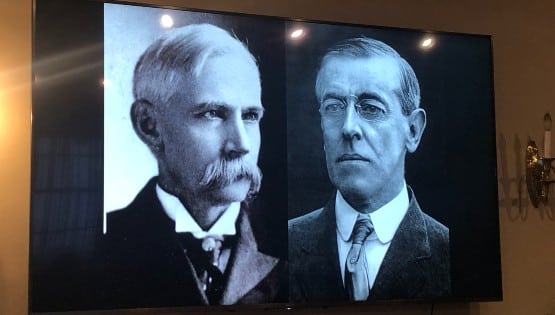Column by Ken Plum

Fortunately, citizens concerned about environmental issues rallied together mostly under the auspices of the Chesapeake Bay Foundation to work and lobby for the kind of actions necessary to save and restore the Bay. In 2010 the six Bay states along with the federal government and the District of Columbia began a renewed effort to restore the health of the Bay and the rivers and streams that flow into it through a Chesapeake Clean Water Blueprint. Progress is being made in reducing the amount of nitrogen, phosphorus, and sediment pollution in the Bay, and there is a return of grasses, crabs, oysters and other sea life indicating a return to health.
Last week the House Agriculture, Chesapeake and Natural Resources Committee on which I serve along with its Senate counterpart spent a couple of days at a retreat in the Chesapeake Bay region and the Eastern Shore of Virginia. As one who has been involved in Save the Bay efforts over many decades, I was especially pleased to see from our boat trips on the Bay the progress that is being made. Successful aquaculture programs are underway growing oysters and clams for markets. The numbers related to water quality are improving.
While the 64,000 square mile region that comprises the watershed of the Bay is massive, it is at the same time a very fragile system. The job of cleaning up the Bay is far from finished. We have made great progress in cleaning up the discharges from sewer systems and in reducing industrial pollution, with the exception of the state of Pennsylvania that needs to get on board. More and more farmers are adopting best management practices that reduce run-off from agricultural production.
The Bay is still at risk. Too many suburbanites over-fertilize their lawns. Too much trash is dumped in local streams only to end up in the Bay. Some farmers are dragging their feet in adopting new practices that would keep our streams and Bay water clean. Most disappointing is the action of some politicians who hinder progress on the Bay cleanup. Congressman Bob Goodlatte of Virginia has introduced an amendment that would end much of the federal funding for Bay cleanup and would have a devastating effect on the effort.
We can all do our part. Join our local stream cleanup programs. Reduce your use of fertilizer. Educate yourself on the issues. Go to www.cbf.org.
Ken Plum is a member of the Virginia House of Delegates.










